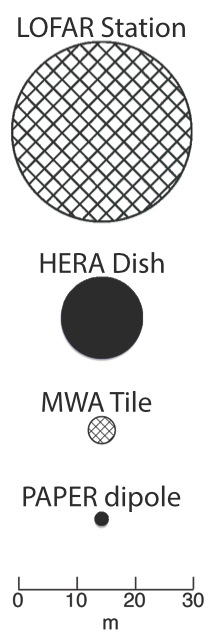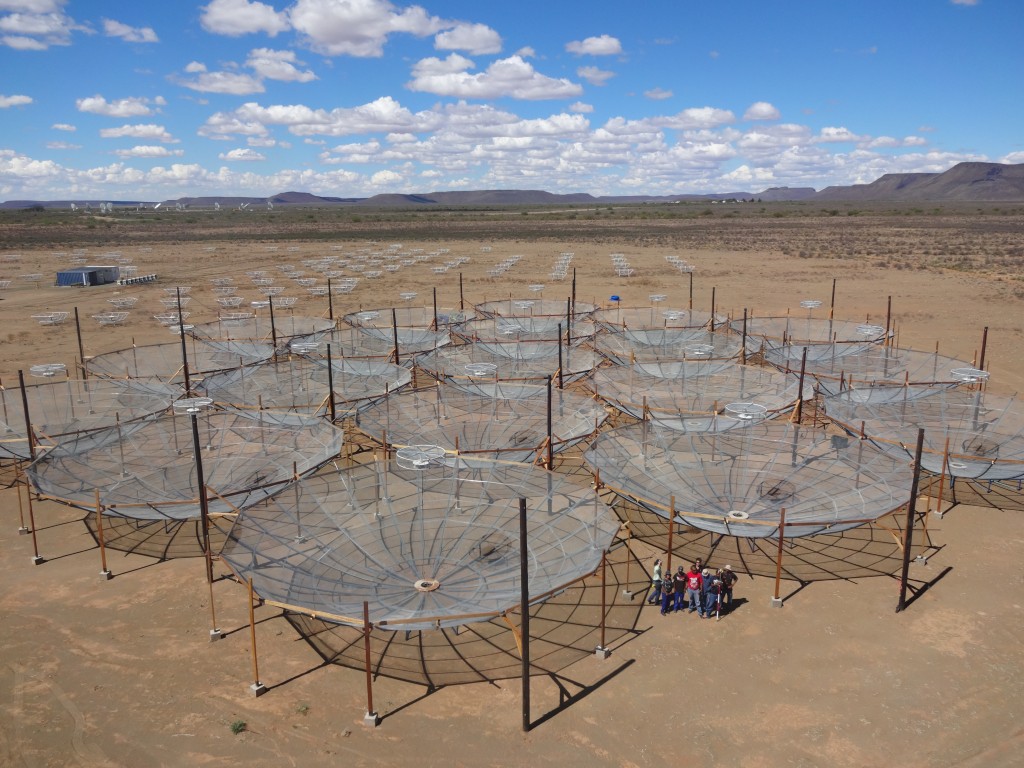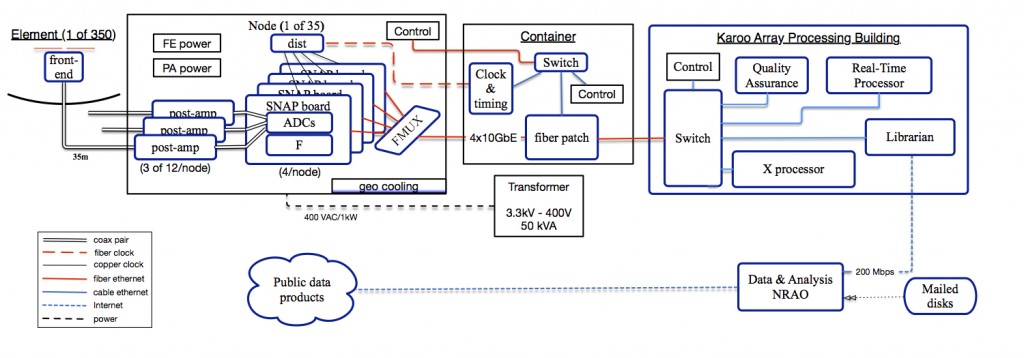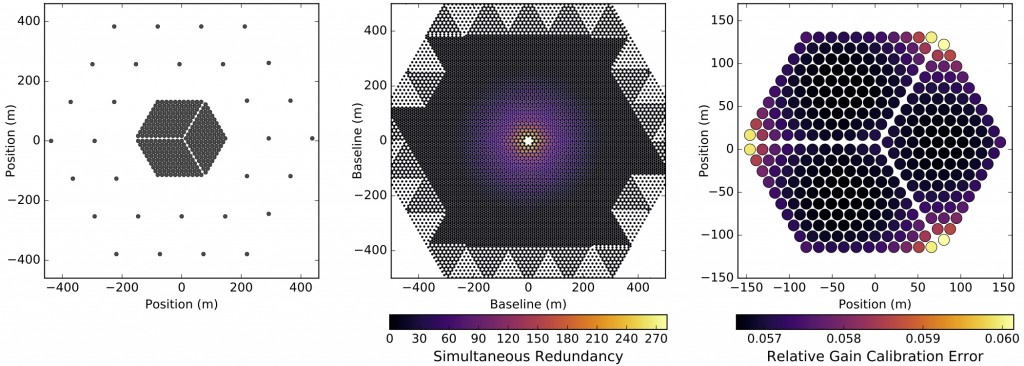Dishes
 HERA’s elements are 14 meter diameter parabolic dishes. They are constructed on-site with low-cost commonly available materials such as wood and polymer pipes. The main limiting factor in the use of a dish to observe the HI spectral line signal are internal reflections which show up as spectral ripples. Internal reflections on larger dishes have a faster spectral ripple. The 14 meter diameter is chosen by increasing the dish size until the time scale of reflections across the dish approaches the spectral scales of the HI signal. With a collecting area of 150 square meters this dish has 40x the collecting area of a PAPER element and 7x more than an MWA element.
HERA’s elements are 14 meter diameter parabolic dishes. They are constructed on-site with low-cost commonly available materials such as wood and polymer pipes. The main limiting factor in the use of a dish to observe the HI spectral line signal are internal reflections which show up as spectral ripples. Internal reflections on larger dishes have a faster spectral ripple. The 14 meter diameter is chosen by increasing the dish size until the time scale of reflections across the dish approaches the spectral scales of the HI signal. With a collecting area of 150 square meters this dish has 40x the collecting area of a PAPER element and 7x more than an MWA element.
The dishes are fixed to the ground observing the sky as it passes over and are arranged in a densely packed hexaganal lattice with 32 outriggers which increase the resolution by a factor of 4. The dense packing provides an ultra-complete sampling of incident flux, the repeating hexagonal pattern is optimized for measuring spatial modes at very high signal to noise, while also providing many redundant samples for calibrating at very high fidelity. The hexagon pattern is split into three chunks offset by non-integer fractions of a hex spacing. This smooths out the sampling function and improves the calibratability of the outriggers.
The dishes are made of PVC pipe stays covered in wire mesh. The support pipes are fixed to the center in a concrete cylinder and at the rim with wooden pillar supports. The feed is hung from three equally spaced telephone poles which are arranged in an interstitial hexagonal lattice and are shared by adjacent dishes.

HERA 19, at first light, 7 March 2016
Receivers and Correlator
The HERA feeds are broadband dipoles which contain active amplifiers that provide gain and match to a 35m (105ft) cable which takes the signal to a node emplaced nearby. Cooled by geothermal forced air, this node supports 12 secondary amplifiers which and 4 SNAP boards, each of which digitizes 3 signals. The SNAP boards also perform the fourier transform which is the first stage of correlation in an FX correlation. These spectra are then sent over four 10Gb fiber optic cables back to a central location where signals from all nodes are collected and multiplexed over a 2Tb multi-mode fiber back to the SKA Karoo Array Processing Building. In the KAPB the spectra are cross-multiplied in the X-processor and averaged in time.

Six generations of CASPER digital signal processing (left to right) culminating in the SNAP board (right, along with the long-haul fiber-link test setup). By preserving its design tools, signal processing libraries, and interface code between hardware generations, CASPER hardware and a modular architecture have enabled the PAPER correlator to be easily upgraded for HERA

HERA’s signal path. Front-end amplifiers at the antenna feed drive signals on short coaxial cables to field nodes. Nodes contain post-amplifiers and Smart Network ADC Processor (SNAP) boards that digitize, channelize, and packetize data for optical transmission in 10 Gb Ethernet format. Optical fibers are aggregated in a field container onto a 10 km fiber bundle connecting to the Karoo Array Processing Building, where signals are cross-multiplied in the X processor. After correlation, visibilities are stored by the Librarian, pre-processed and redundantly calibrated by the Real-Time Processor, and transmitted over the network to clusters for storage and analysis. Final products are hosted on public-facing NRAO servers, with a web interface for selecting and downloading data.
Data
The HERA correlator outputs 4-8TB of data per night, in a continuous stream, generating in a typical observing season 1/2 to 1 Petabyte of data. A first set of analysis routines must be done on site to reduce the data volume to a size which can be moved over the internet for further analysis. Near real-time calibration and first stage analysis help operators monitor the array performance. The Librarian archive system ingests, tracks, and serves data to on-site systems and manages the transfer of data to off-site locations.


